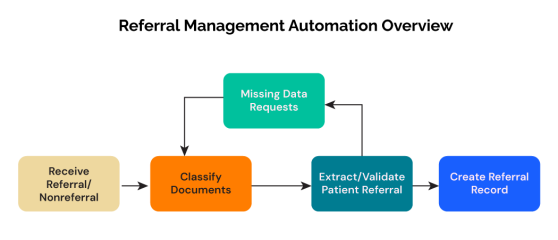Manual referral processing consumes thousands of staff hours each year.
Healthcare teams must receive, review, and route hundreds of referral documents — often arriving as faxes or scanned forms in multiple formats — while ensuring completeness and compliance.
Common challenges include:
- Manual document handling: Sorting and indexing 800+ daily referrals from varied sources (fax, email, EHR printouts).
- Incomplete data: Missing patient or insurance information that triggers time-consuming fax-back loops.
- Complex triage: Specialty routing that relies on manual ICD-10 lookups and subjective decision-making.
- Operational bottlenecks: Delays in intake and appointment scheduling leading to revenue leakage and reduced patient satisfaction.
- Limited visibility: No automated alerts for new or incomplete referrals, leading to scheduling gaps.
These challenges lead to longer wait times, lost revenue, and lower CSAT scores, while overburdening referral coordinators and clinical staff.

